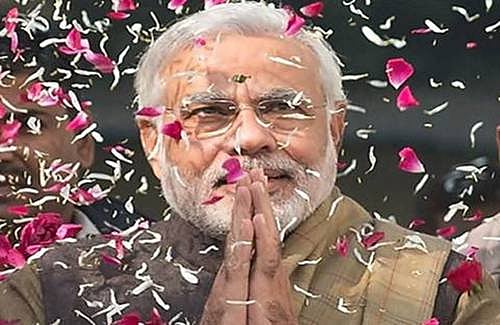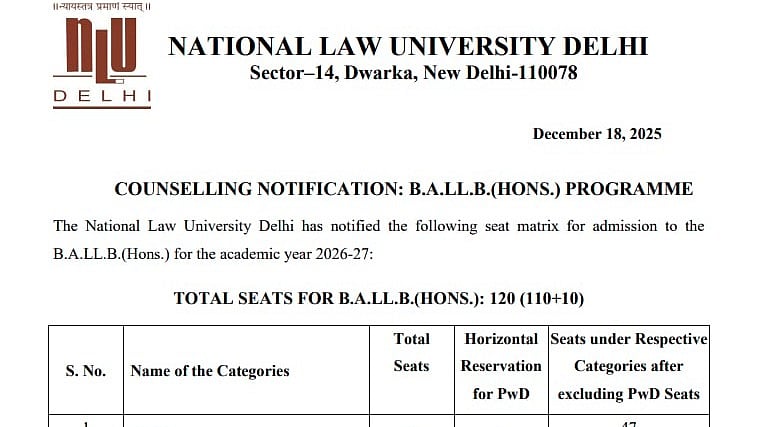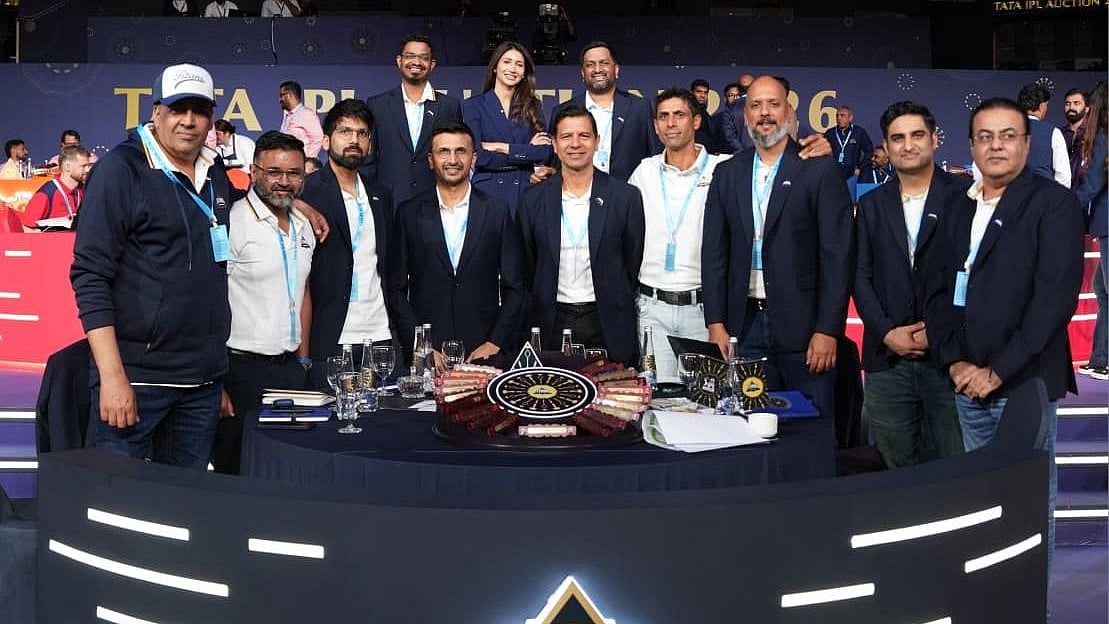New Delhi: Backed by a motley troupe of just 45 ministers, Prime Minister Narendra Modi has set the wheels of the new National Democratic Alliance government rolling. Going by the tall promises made, one would have expected a star-studded council peppered with media-friendly professionals.
Modi saw things differently and has collected an assemblage of ministers that features only politicians–known, slightly known and even downright obscure. Now, we do know that Modi believes in branding, in sending out messages through his actions.
The message from the nature and composition of the council of ministers is loud and clear – it is the Modi way or the highway.
The prime minister wants things to move thick and fast while wielding ultimate control in government.
His strategy of creating ‘organic’ clusters of related ministries and placing them under one minister is being seen as a welcome step in streamlining inter-ministerial coordination and operations, while neutralising chances of friction and clashes between ministers holding work to ransom.
Modi seems to have built his team on his own terms. He has stitched together a lean council of ministers with fewer stars and, therefore, fewer egos. Experts and political analysts are of the view that it is his first step in the direction of his widely publicised moot point of “minimum government, maximum governance”.
The average age of his ministers is just 57 years, and many of them owe their places in the council and, therefore, their allegiance to Modi. The prime minister, hence, seems to have paved the way for faster decision-making process. In practical terms, it gives Modi a better grip over his government and ensures to a large extent that the government doesn’t speak in too many voices.
Veterans and senior leaders who have had the mantle to challenge and even undermine Modi in the past have been kept at an arm’s length from the government. For it would be much more difficult for him to wield control over the likes of L.K. Advani and Murli Manohar Joshi, when compared to, say, a D.V. Sadananda Gowda, Smriti Irani or a Piyush Goyal.
Sushma Swaraj, who seemed alienated within the BJP when the party was engrossed in the Modi blitzkrieg, has been accommodated in one of the top four Cabinet portfolios–external affairs. Swaraj is perhaps the only minister in the entire council who has the mantle to stand up to Modi, if push comes to shove.
Swaraj, considered close to Advani, was the leader of Opposition in the 15th Lok Sabha and was visibly miffed with the party over sidelining of the patriarch. She had also made public her displeasure over the induction of tainted politicians into the party. In giving her external affairs, Modi has executed the perfect balancing act.
The prime minister has done justice to Swaraj’s stature as one of the senior most leaders of the party while giving her a portfolio that would keep her out of his hair. As foreign minister, her domain within the larger ambit of the government would be confined as far as matters of domestic policy, administration and governance are concerned.
First reactions and comments from the ministers who are taking charge, too, reflect their gratitude and allegiance to Modi. He seems to have streamlined the operations of the government in such a manner that his office is now the undisputed centre of power within the government and the BJP. All roads at the Centre now lead to Modi.
This is also being looked at as an extension of his strategy in Gujarat, where he had a history of a very centralised decision-making process, mostly starting and ending at the chief minister’s doorstep. This attribute was yet again exhibited by Modi, as he was able to keep the media and many within his own party guessing over portfolio allocations practically till the last minute.
After two decades of coalition governments and fractured mandates, this came as a surprise in the high-profile media and political cabals of the National Capital. To what extent will such a centralised power structure be feasible at the national stage from an accountability and a checks-and-balances perspective is the critical question that can be only answered in time.
According to analysts and experts, portfolio allocations give the impression that key and plump ministries like home affairs, petroleum and natural gas, power and coal, commerce and industry, railways, human resource development, and agriculture among others, will see more direct involvement from the prime minister.
Except for maybe home affairs, which has been given to Rajnath Singh, all other ministries have fresh and relatively inexperienced faces, who in effect, will be reporting directly to Modi. Overall, it appears to be a bunch of younger, talented and more credible faces than what we have been subjected and used to.
It is also being argued that by doing this, Modi has minimised chances of power struggles and ego clashes among ministers, perhaps a lesson well learnt from the experiences in the United Progressive Alliance government. In a single stroke, he has streamlined power structures in the government, and by extension, in the BJP.
Structurally, the council of ministers is taking shape as a layered group with the top four or five ministers, like Arun Jaitley, Sushma Swaraj, Nitin Gadkari, Rajnath Singh and M. Venkaiha Naidu forming the top layer. That notwithstanding, overall, Modi has opted for a more horizontal structure than a vertical one, and has placed himself at its very centre.
He has also sent out a strong message to BJP’s allies, who have minimal representation in government with just one Cabinet berth apiece for Shiv Sena, Shiromani Akali Dal, Telugu Desam Party and Lok Janshakti Party. With BJP bagging a majority all by itself under Modi, that message is loud and clear–you’re welcome but the government doesn’t depend upon you for survival.
However, the exclusion of two leaders in particular–BJP’s Arun Shourie and Shiv Sena’s Suresh Prabhu–came as a bit of a surprise for most. Both are considered individuals of high integrity and had an impressive record in the Atal Bihari Vajpayee government. There was intense speculation in the media that Shourie was under serious consideration for the finance portfolio while Prabhu, a former power minister, was being looked at for the energy ministries.
Like most things about this council of ministers, Shourie and Prabhu’s exclusion, too, is a much speculated issue. It is believed that Shourie was left out due to his frank and candid comments on the likely structure of the Cabinet before the names were sealed.
In case of Prabhu, it is being said he was a victim of politics between the Shiv Sena and the BJP, given that he is not considered close to the Thackeray household.
It is being said both Shourie and Prabhu could be taken on board by Modi for different roles, and not necessarily as ministers, at a latter stage.
All in all, with a single party majority for the first time in three decades, Modi’s arrival in the Prime Minister’s Office signals a watershed moment in Indian politics. His seemingly lean, mean and efficient council of ministers is an audacious experiment, which, if successful, can alter the way governments have functioned in India.
And with his knack of delegation, monitoring and micro-management, this government and this council of ministers is, literally and allegorically, a ‘Modi Sarkar’ all the way.









